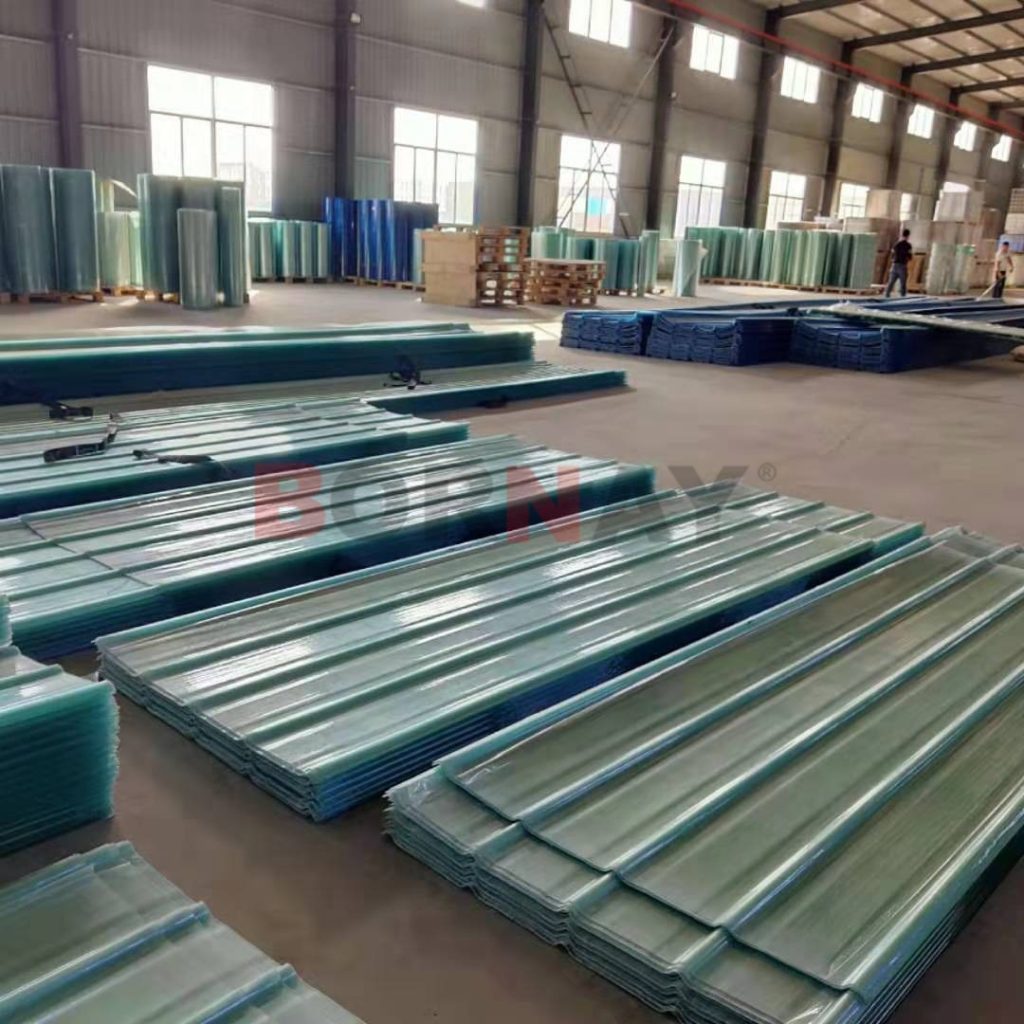Bienvenidos a Langfang-bonai
FRP Roof Panels: Providing Cost-Effective Solutions for Residential and Public Buildings
Introduction:
Fiber-Reinforced Polymer (FRP) roof panels have gained significant traction in the construction industry as an economical and practical choice for both residential and public buildings. Offering an array of advantages over traditional roofing materials, FRP panels have become a go-to solution for builders, architects, and homeowners looking to balance cost-effectiveness with superior performance. This article explores how FRP roof panels provide an affordable and reliable roofing solution for diverse building projects.
- Budget-Friendly Material:
When it comes to roofing options, cost considerations play a crucial role in decision-making, especially for large-scale public buildings and residential projects. FRP roof panels present a cost-effective alternative to traditional materials such as concrete, clay tiles, or metal sheets. The manufacturing process of FRP panels involves readily available raw materials, reducing production costs, which are ultimately passed on to the consumers. This affordability allows construction projects to stay within budget while still maintaining high-quality roofing standards.
- Reduced Installation Expenses:
The lightweight nature of FRP roof panels has a direct impact on installation expenses. Their easy handling and reduced weight significantly cut down labor and equipment costs during the installation process. The panels can be quickly and efficiently installed, minimizing the overall construction timeline. Moreover, the simplicity of handling FRP panels translates into savings on transportation, as they require less effort and resources to transport compared to heavier roofing materials.
- Longevity and Low Maintenance:
FRP roof panels are engineered to be highly durable and resistant to various environmental factors. Their resilience against harsh weather conditions, UV radiation, and corrosion ensures a prolonged service life. As a result, the need for frequent repairs and maintenance is greatly reduced. This extended durability translates into long-term cost savings, as building owners can enjoy a reliable roofing system that requires minimal upkeep.
- Energy Efficiency:
In addition to cost-effectiveness, FRP roof panels contribute to improved energy efficiency in buildings. Their inherent thermal insulating properties help regulate indoor temperatures, reducing the reliance on artificial heating and cooling systems. As a consequence, energy bills are lowered, providing significant financial relief for homeowners and public building operators alike.
- Versatility in Design:
FRP roof panels offer an array of design options, catering to diverse architectural styles and preferences. The panels can be molded into various shapes, sizes, and colors, allowing architects to explore innovative and aesthetically pleasing roof designs. Whether it's for residential homes, commercial complexes, or public institutions, FRP panels offer the flexibility to create visually appealing and inviting roofscapes.

Conclusion:
The increasing popularity of FRP roof panels in both residential and public buildings can be attributed to their cost-effectiveness and superior performance. As a budget-friendly roofing solution, FRP panels provide an attractive option for construction projects seeking to balance financial constraints without compromising on quality. With their lightweight construction, durability, low maintenance, energy efficiency, and design versatility, FRP roof panels continue to establish themselves as an economical and reliable choice for modern buildings, making them a preferred option for the construction industry's cost-conscious consumers.


